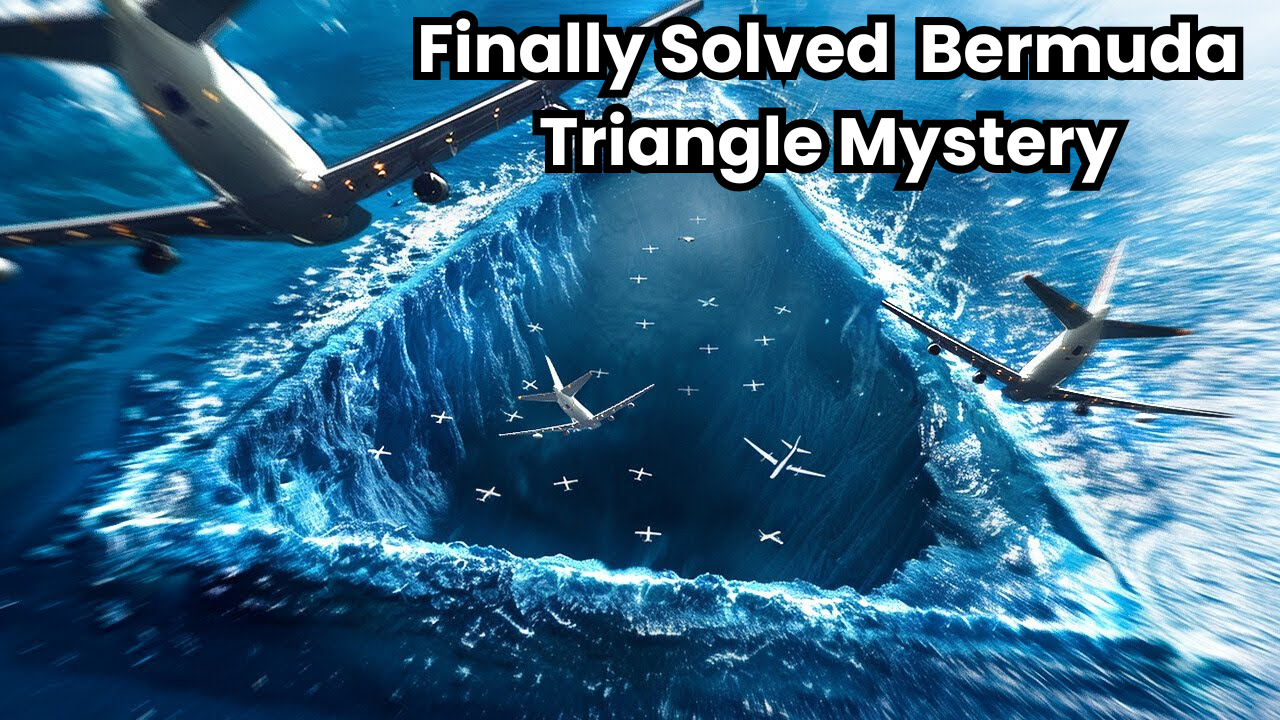If you’re tuned into viral content, you’ve probably stumbled across a video where a YouTuber hinted at a hidden treasure in the Bermuda Triangle, and a daring adventurer set off to claim it, scoring $10,000 in the process. While his reward was noteworthy, his real victory was returning alive from this infamous region. Known for its strange, sometimes frightening incidents, the Bermuda Triangle stretches between Florida, Puerto Rico, and Bermuda, an area often associated with chilling disappearances. With claims that over 50 ships and 20 airplanes have vanished in this zone, the mysteries surrounding the Bermuda Triangle have fascinated people for decades.
Many have theorized that mystical powers or otherworldly vortexes are at work, pulling objects into alternate dimensions. However, Australian scientist Karl Kruszelnicki offers a different perspective, believing he may have solved the riddle of the Bermuda Triangle. According to him, these myths and strange disappearances can largely be explained by two key factors: human error and weather.
The Case of Flight 19
One of the more famous incidents associated with the Bermuda Triangle was the disappearance of Flight 19 in 1945. In this case, five U.S. Navy planes on a routine training mission from Florida suddenly lost contact about 90 minutes into the flight. Despite extensive air and sea searches, no trace of the planes or the 14 men on board was ever found.
Interestingly, weather conditions at the time were clear, making the disappearance even more perplexing. However, Kruszelnicki explains that human error may have played a significant role. The flight’s commander, despite having over 2,000 flying hours, was known to be a poor navigator. Reportedly, he had even become lost at sea on previous missions. On that fateful day, both compasses malfunctioned, and the commander mistakenly believed they were flying over the Florida Keys when, in reality, they were likely over the Bahamas. Rather than heading west toward Florida, he directed his team east into the Atlantic, eventually running out of fuel—a tragic error with lasting consequences.
Bad Weather and Unpredictable Currents
The second major factor Kruszelnicki cites is the region’s weather. The Bermuda Triangle sits in a zone frequently hit by Atlantic tropical storms and hurricanes. Long before modern forecasting, these powerful storms claimed numerous ships and planes. The area also has the Gulf Stream, a strong ocean current that can create sudden and intense weather changes.
One well-known example is the USS Cyclops, a massive cargo ship carrying 11,000 tons of manganese that vanished without a trace in 1918. With no distress signal and no wreckage ever found, theories abound, from violent storms to underwater events like rogue waves or landslides. According to Kruszelnicki, the ocean’s sheer depth in the Bermuda Triangle—up to 30,000 feet—could make it nearly impossible to find wreckage, as the deep waters are capable of concealing lost ships and planes indefinitely.
Unlikely but Possible: Methane Clathrates
Another theory for some Bermuda Triangle incidents involves methane clathrate, an ice-like compound containing methane gas trapped within. When these formations break, they release methane bubbles, which rise to the surface and can potentially reduce water density. Experiments have shown that if enough bubbles surface at once, they could impact a ship’s buoyancy and potentially cause it to sink. While this scenario is rare, it is theoretically possible in the Bermuda Triangle’s deep waters.
Separating Myth from Reality
While human error and bad weather likely explain most Bermuda Triangle incidents, the mystery has been exaggerated. Despite its fame, the Bermuda Triangle has no official boundaries or dedicated maps, and unexplained events are sometimes wrongly attributed to the region. For example, the infamous Mary Celeste ghost ship, found intact in 1872 but without its crew, was actually abandoned about 400 miles from the Azores—far from the Bermuda Triangle.
Ultimately, confirmation bias has contributed to the legend, as people tend to link any eerie disappearance in the North Atlantic with the Bermuda Triangle. In reality, this area sees regular air and sea traffic daily, and incident rates are no higher than anywhere else in the world. As intriguing as the Bermuda Triangle may be, science suggests that it’s not quite as mysterious as some would have us believe—though it will continue to inspire tales of adventure and discovery.
That’s it for today! So hey, if you pacified your curiosity, Explore more Amazing Facts and stay on the Didyouknowbyte!
Warning Signs That Could Save Your Life Before Disaster Strikes
The Eruption of an Island That Shattered and changed Earth’s Future
Read our previous article: The Science Behind the Feeling of Being Watched: Unseen Presence
Sports Update: The area also has the gulf stream, a strong ocean current that can create sudden and intense weather changes Stay tuned for more updates on Finally Solved the Mystery of the Bermuda Triangle and other trending sports news!
Your Thoughts Matter! What’s your opinion on Finally Solved the Mystery of the Bermuda Triangle? Share your thoughts in the comments below and join the discussion!
